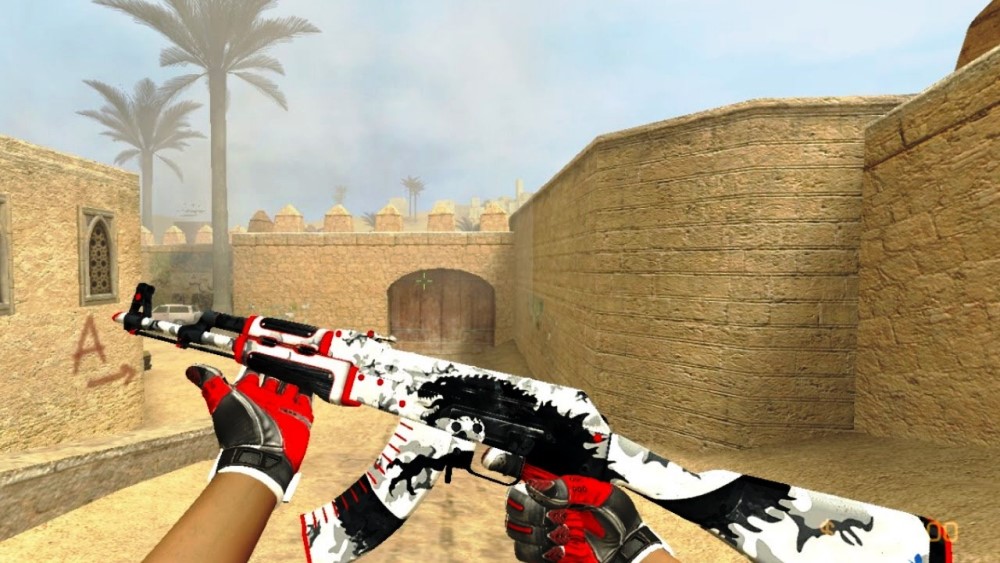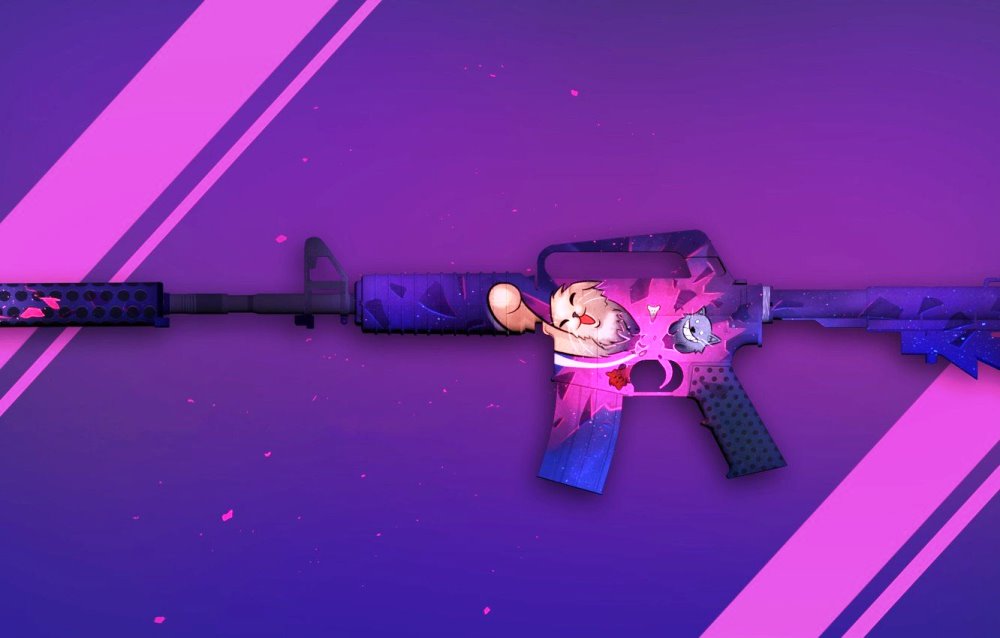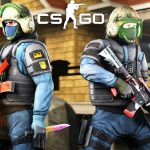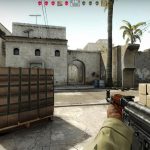
The creators of skins for CS:GO (Counter-Strike: Global Offensive) are not limited to a single individual. Skins in CS:GO are created by a diverse community of artists, designers, and contributors. Valve Corporation, the developer of CS:GO, established the Steam Workshop, which allows artists to submit their skin designs for consideration. The community then votes on the submitted designs, and Valve selects the most popular ones to be added to the game. Therefore, the skins in CS:GO are the result of collaborations between multiple creators within the CS:GO community.
Steam Workshop
The Steam Workshop is a platform provided by Valve Corporation, the developer of the Steam gaming platform. It allows users to create, share, and download user-generated content for games that support the Steam Workshop feature. This content can include various items such as mods, maps, skins, and more.
In the context of CS:GO, the Steam Workshop is an essential part of the game’s community-driven content creation. It provides a space where artists and creators can submit their skin designs for consideration. Players can browse the Workshop, vote for their favorite designs, and provide feedback. Valve then selects the most popular and high-quality designs to be added to the game as official skins.
The Steam Workshop is not exclusive to CS:GO and is available for many other games on the Steam platform. It serves as a hub for community creativity and enables players to enhance their gaming experiences with user-generated content.

How does the community vote on the skin designs submitted?
In the CS:GO community, the process of voting on skin designs submitted to the Steam Workshop typically involves the following steps:
- Submission: Artists and creators upload their skin designs to the CS:GO section of the Steam Workshop. They provide images, descriptions, and other relevant information about their designs.
- Visibility: Once submitted, the designs become visible to the CS:GO community on the Steam Workshop. Players can browse through the submitted designs, view images, and read descriptions to evaluate the quality and appeal of each design.
- Voting: Steam users can vote on the designs by expressing their preference through the Workshop’s voting system. The voting system usually consists of a simple thumbs-up or thumbs-down mechanism, allowing users to indicate whether they like or dislike a particular skin design.
- Popularity Ranking: The popularity of each design is determined by the number of positive votes it receives from the community. The designs with higher positive ratings are considered more popular.
- Valve’s Selection: Valve regularly reviews the most popular and well-received skin designs on the Steam Workshop. They make the final decision on which designs to include in the game. The selection process takes into account factors such as popularity, quality, uniqueness, and adherence to the game’s guidelines.
It’s important to note that Valve has the ultimate authority in selecting which designs are added to CS:GO as official skins. While community feedback and popularity play a significant role, the final decision rests with Valve.
Submission
To submit skin designs for CS:GO through the Steam Workshop, you can follow these general steps:
- Create Your Design: Use image editing software such as Photoshop or dedicated 3D modeling software to create your skin design. Make sure to follow the guidelines and specifications provided by Valve for CS:GO skin creation. These guidelines usually include image resolution, format, and other technical requirements.
- Prepare Your Submission: Gather all the necessary files and information related to your skin design. This typically includes high-quality images showcasing the design from different angles, a brief description, and any additional details you want to provide.
- Log in to Steam: Access the Steam platform and ensure that you have an active Steam account. If you don’t have one, you’ll need to create an account before proceeding.
- Navigate to the CS:GO Workshop: Open the Steam client and go to the CS:GO Workshop section. You can find this by searching for “Counter-Strike: Global Offensive” in the Steam Store and selecting the “Workshop” tab on the game’s page.
- Upload Your Design: Within the CS:GO Workshop, click on the “Upload” button or a similar option to begin the submission process. Follow the on-screen instructions to select the files for your skin design, provide the necessary information, and complete the upload process.
- Set Appropriate Tags and Categories: During the submission process, you’ll have the option to assign relevant tags and categories to your skin design. This helps users find your design when browsing the Workshop. Choose tags that accurately describe the theme, style, or specific characteristics of your skin.
- Submit and Publish: Once you have filled in all the required information, reviewed your submission, and are satisfied with the details, proceed to submit your design. It will then become visible to the CS:GO community on the Steam Workshop.
After your submission, other Steam users can vote on your design, provide feedback, and show their support by indicating their preference through the Workshop’s voting system. Valve regularly reviews the submissions and selects the most popular and high-quality designs to be officially added to CS:GO as skins.
Visibility
When you submit a skin design to the Steam Workshop for CS:GO, its visibility will depend on various factors.
Here are some key points to consider regarding the visibility of your submission:
- Workshop Visibility: Your submitted skin design will be visible to the CS:GO community on the Steam Workshop. It will appear alongside other submitted designs, allowing users to browse and evaluate it.
- Sorting and Filters: The Steam Workshop provides sorting and filtering options to help users navigate and discover content. Users can sort designs by different criteria, such as popularity, trending, or recent submissions. They can also apply filters based on categories, tags, and other parameters.
- Community Interaction: The visibility and exposure of your submission can be influenced by the level of community interaction it receives. If your design receives positive feedback, votes, and engagement from the community, it is more likely to gain visibility and attract attention.
- Popularity and Rating: The popularity of your skin design is a significant factor in determining its visibility. The more positive votes and support your design receives from the community, the higher it will rank in popularity. Highly popular designs are more likely to be noticed by both players and Valve’s review team.
- Valve’s Selection: Valve regularly reviews the most popular and well-received submissions on the Steam Workshop. They make the final decision on which designs to include in the game. While community popularity is important, Valve has the ultimate authority in selecting skins for official inclusion.
To enhance the visibility of your submission, you can actively promote your design within the CS:GO community. Engage with other players, share your design on forums or social media platforms, and encourage others to vote and provide feedback. The more exposure and positive interaction your design receives, the better its chances of gaining visibility on the Steam Workshop.
Voting
In the Steam Workshop for CS:GO, voting plays a crucial role in determining the popularity and visibility of skin designs.
Here’s how the voting process typically works:
- Community Voting: Once a skin design is submitted to the Steam Workshop, users in the CS:GO community can browse through the designs and vote on them. Voting is usually done through a simple thumbs-up or thumbs-down system, where users indicate whether they like or dislike a particular design.
- Positive and Negative Votes: Users can express their preference for a design by giving it a positive vote (thumbs-up) or indicate their dislike by giving it a negative vote (thumbs-down). The number of positive and negative votes received determines the overall rating of the design.
- Popularity Ranking: The popularity of a skin design is determined by the ratio of positive votes to total votes (positive + negative). The higher the ratio of positive votes, the more popular the design becomes. This popularity ranking helps filter and sort the designs in the Steam Workshop.
- Trending and Top Rated: The Steam Workshop often includes sections for trending or top-rated skin designs. These sections showcase the designs that have gained significant popularity and positive votes within a specific time frame. Being featured in these sections can significantly boost a design’s visibility.
- Feedback and Comments: Along with voting, users can provide feedback and comments on the skin designs they view in the Steam Workshop. This allows for further engagement and discussion within the community, potentially influencing the perception and popularity of the designs.
It’s important to note that while voting and popularity are significant factors, Valve has the final say in selecting the skins that will be officially added to CS:GO. They take into account not only the community’s response but also factors like the quality, uniqueness, and adherence to the game’s guidelines when making their decisions.
Popularity Ranking
Popularity ranking in the Steam Workshop for CS:GO is determined by the ratio of positive votes to total votes a skin design receives.
Here’s how it generally works:
- Positive Votes: Positive votes are expressed through thumbs-up or similar indicators on the Steam Workshop. Users can vote positively for a skin design they like and consider worthy of being added to the game.
- Negative Votes: Similarly, negative votes are expressed through thumbs-down or similar indicators. Users can vote negatively for a skin design they dislike or do not find suitable for CS:GO.
- Total Votes: The total votes for a skin design are the sum of positive votes and negative votes it receives from the community.
- Popularity Ratio: The popularity ratio is calculated by dividing the number of positive votes by the total number of votes (positive + negative). For example, if a design has 100 positive votes and 20 negative votes, the popularity ratio would be 100/(100 + 20) = 0.83 or 83%.
- Sorting by Popularity: Skin designs in the Steam Workshop are often sorted by popularity. Designs with higher popularity ratios tend to rank higher and gain more visibility compared to those with lower ratios.
- Trending and Top Rated Sections: The Workshop may feature specific sections for trending or top-rated designs. These sections highlight the designs that have gained significant popularity within a certain timeframe or overall. Designs in these sections tend to attract more attention and engagement from the community.
It’s important to note that popularity ranking is just one factor considered by Valve when selecting skins for official inclusion in CS:GO. While a high popularity ratio can increase the chances of a design being noticed, Valve also considers other aspects such as the quality, uniqueness, and adherence to the game’s guidelines in their decision-making process.
Valve’s Selection
Valve’s selection process is the final step in determining which skin designs from the Steam Workshop will be officially included in CS:GO. While community voting and popularity play a significant role, Valve has the ultimate authority in selecting the skins.
Here are some key points about Valve’s selection process:
- Review and Evaluation: Valve regularly reviews the most popular and well-received skin designs on the Steam Workshop. They assess the designs based on various factors such as popularity, quality, uniqueness, and adherence to the game’s guidelines.
- Quality and Execution: Valve places a strong emphasis on the quality and execution of skin designs. They look for designs that demonstrate a high level of skill, creativity, and attention to detail. Designs with clean and appealing aesthetics, appropriate color schemes, and well-defined themes have a better chance of being selected.
- Uniqueness and Originality: Valve seeks to introduce a diverse range of skins to the game. They look for designs that offer something new and unique, whether it’s through innovative patterns, textures, or concepts. Designs that stand out from existing skins and bring fresh ideas to the game are more likely to be chosen.
- Adherence to Guidelines: Valve has specific guidelines and requirements for skin designs in CS:GO. These guidelines include technical specifications, restrictions on certain themes or imagery, and other considerations. Designs that adhere to these guidelines and maintain the integrity of the game are more likely to be considered for selection.
- Developer Collaboration: Valve also collaborates with skin creators during the selection process. They may provide feedback and suggestions to further refine the designs or address any issues. This collaboration ensures that the final selected skins integrate well with the game and meet the desired standards.
- Official Release: Once Valve has made their selection, the chosen skin designs are officially added to CS:GO as part of updates or operations. The creators of the selected skins are credited, and the skins become available for players to acquire and use in the game.
Valve’s selection process ensures that the added skins maintain the overall balance, visual integrity, and quality standards of CS:GO. While community feedback and popularity are important, Valve’s expertise and judgment are vital in curating a collection of skins that enhance the game’s experience.


